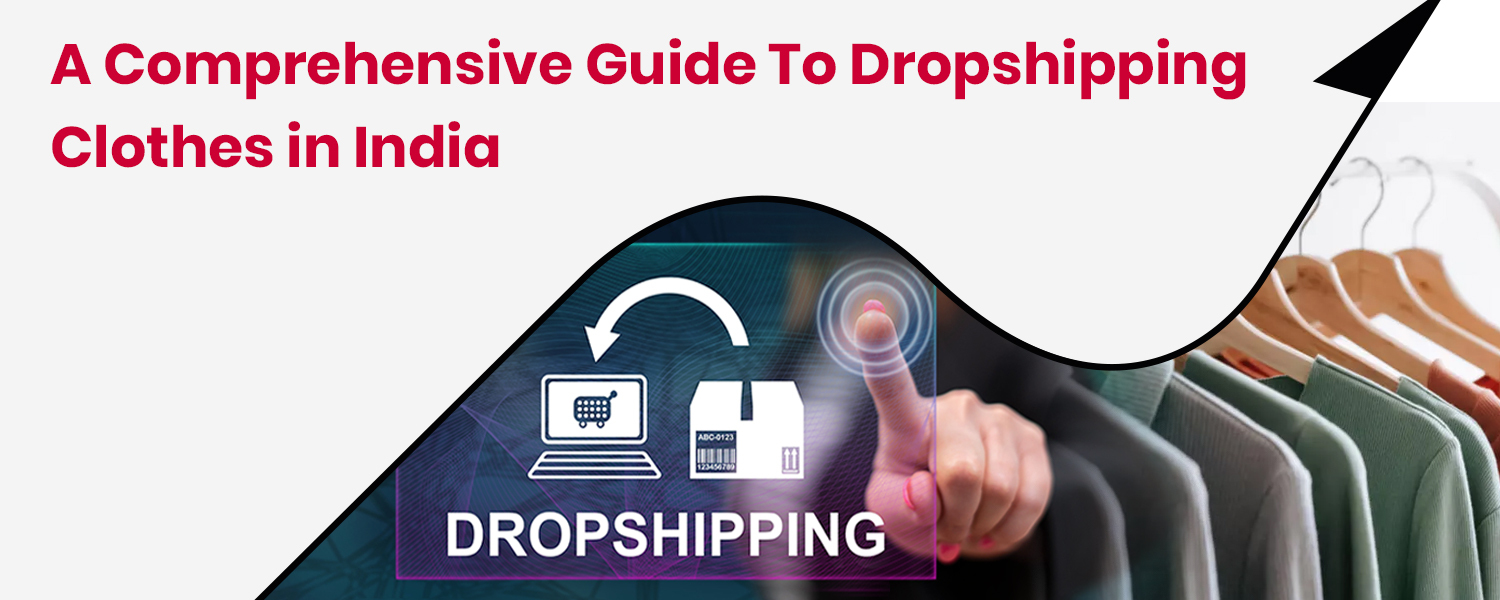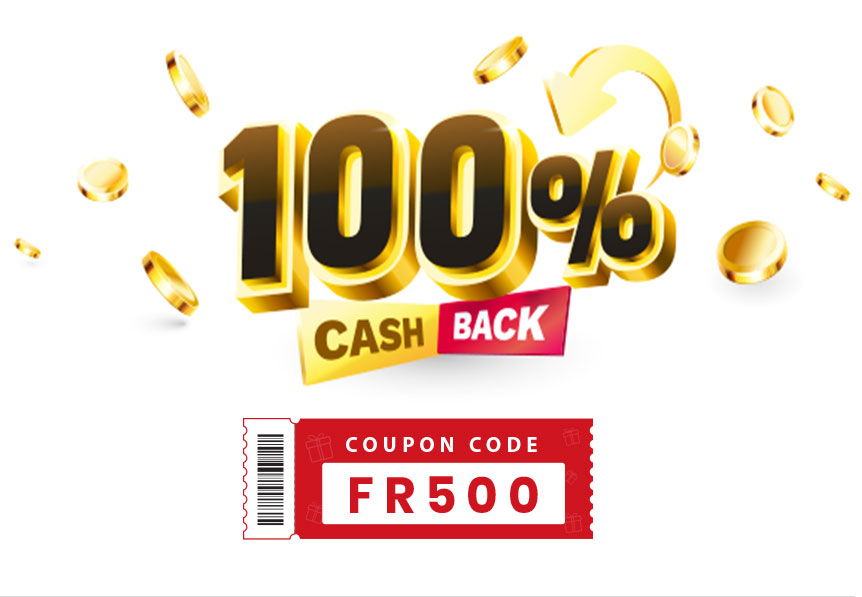Hot off the press! The fashion industry is valued at $2.4 trillion globally, and YOU—can grab a slice of that pie without even stocking a single item of clothing. Suppose you’re a fashion enthusiast sitting on the fence, wondering whether dropshipping is your runway to success. Let me tell you, the clothing niche within dropshipping is like the little black dress of retail—timeless, essential, and always in demand.
It is an industry where the customer’s appetite for ‘new’ never diminishes. Sure, you can sell anything from home gadgets to fitness equipment, but nothing screams ‘forever fashionable’ quite like clothing. With the resurgence of online shopping, particularly post-pandemic, clothing has become one of the most dropshipped items worldwide.
If you’re in India or eyeing the Indian market. With over 700 million internet users, India’s e-commerce sector is the place to be. The diversity in clothing and fashion makes it a rich playing field to explore multiple niches and customer segments.
You might be thinking, “Sounds amazing, but where do I start?” This guide will answer your question, helping you with everything you need about dropshipping clothes.
Stay tuned and keep scrolling.
Is Dropshipping Clothes a Profitable Business?
Considering the global worth of the fashion industry, this is a million-dollar question or a trillion-dollar question. The answer is Yes. The demand for clothing is one of the biggest reasons this niche is insanely profitable.
You might think everyone has their basic clothing needs covered, but remember, we live in an Instagram era where outfit repeating is like a sin and fast fashion is ruling. Clothing isn’t a fad or a ‘seasonal love’; it’s a need seasoned with the desire for variety, making it a lucrative market to tap into.
The audience for new, trendy clothing is ever-hungry for the next ‘in’ thing, and the profit margins in the clothing sector, when played right, often range between 30% to 60% and even more if you tap into luxury or specialised markets like ‘sustainable fashion’ or ‘ethnic wear.’
A Step-by-Step Guide on How to Dropship Clothes in India
Researching Your Clothing Dropshipping Niche
Diving headlong into dropshipping is tempting, but a more strategic approach starts with selecting your niche. Niche selection is vital; it allows you to cater to a particular audience and stand out in a saturated market. Keeping an eye on current fashion trends will inform you what’s in demand.
Tools like AutoDS, Google Lens, and good old social media can be a goldmine for trend analysis. AutoDS lets you automatically import hot-selling products based on real-time data, Google Lens can help you visually search and match products, and social media is where real-time fashion exists and evolves.
Identifying Your Target Audience
Your niche may define the industry you’re in, but it’s the target audience that determines your actual business. You need to understand your audience’s demographics (age, gender, location) and psychographics (values, interests). Dig deeper into consumer buying habits by analyzing metrics like average purchase frequency, preferred shopping platforms, and even the time of day they are most active.
Developing a Strategy for Your Dropshipping Business
Once your niche and audience are in place, the next pivotal step is crafting a comprehensive business strategy. Decide on your business model. Will you focus on high-end fashion or budget-friendly items? What will your marketing strategy look like? Consider supply chain management as well, especially if you plan to source products from international markets. Your operational considerations should include logistics, payment gateways, and customer service.
Setting Prices for Your Dropshipping Clothing Store
Price can often be the tipping point in a purchasing decision. It’s essential to cover all costs, including purchasing, shipping, and potential returns. Market research will help you see where your competition is setting their prices.
Set Up a Clothing Dropshipping Store
Your online storefront has several platform options like Wix, WooCommerce, and Shopify. Each has pros and cons, but platforms like Shopify offer built-in tools specifically for dropshipping. In contrast, a custom website offers more control but may demand higher maintenance. Ensure your website offers a stellar user experience, and don’t forget to adhere to all legal requirements, such as terms and conditions and privacy policies.
Find Quality Clothing Suppliers for Dropshipping
Selecting a reliable supplier is critical. Research shipping times and return policies rigorously. You can opt for popular suppliers like Shein, Target, Walmart, or AliExpress. To streamline the whole process, integrate your operations with dropshipping software like AutoDS, which can automatically update inventory and import product details.
Add Products with Dropshipping Automation Software
Gone are the days when you manually added products to your online store. Automation software like AutoDS imports products and optimises them for you. It enhances product SEO and optimises images, making your products easily searchable and more appealing.
Market Your Dropshipping Clothing Business
No matter how great your products are, you won’t make sales if people don’t know they exist. Leverage online advertising through PPC and social media campaigns. Influencer marketing is powerful in the fashion world, turning views into clicks and clicks into sales. Through blogs or videos, content marketing can drive organic traffic, while email marketing campaigns can retain customers and prompt return visits.
Process Orders and Manage Customer Service
To save time and reduce errors, utilise automated order fulfilment services like the NimbusPost Shopify app. Fast shipping can be a unique selling proposition in itself. For customer service, implement features like live chat and a robust FAQ section. These will assist customers in real time, can preemptively answer questions, and reduce your customer service workload.
Best Products for Your Dropshipping Clothes Business
Coats
When winter chills set in, the demand for coats soars, making them an excellent addition to your store during colder months. Because coats are generally higher-priced items, they can significantly boost your profit margins.
Sweaters
What’s remarkable about sweaters is their evergreen appeal. You can offer a variety of materials like wool for warmth, cotton for breathability, and synthetic blends for durability.
Sweatshirts
Sweatshirts have skyrocketed from gym staples to everyday wear. This product taps into the booming work-from-home culture and offers excellent opportunities for customisation.
Jeans
Jeans are the bread and butter of any wardrobe, making them a consistent bestseller. But all jeans are not made equal. Offering a range from slim-fit to bootcut, ripped to pristine, allows you to cater to multiple audience segments.
Tops
Tops offer the broadest appeal, fitting in seamlessly for casual and formal occasions. You can expect a high turnover rate because they’re frequently updated items in most wardrobes.
Kids’ and Youth Clothing
Children outgrow clothes quickly, leading to consistent, often seasonal, buying cycles. Capitalise on periods of high sales like back-to-school and holidays.
Jackets and Hoodies
Jackets and hoodies straddle the autumn and spring seasons, making them favourites. You can target different age groups, from trendy teens to the mature crowd who prefer timeless classics.
Strategies to Scale up Your Dropshipping Business
Be User-Friendly
Your dropshipping website isn’t just a virtual storefront; it’s your brand’s home, and visitors should feel welcomed and guided. Invest in intuitive design layouts, easily navigable menus, and quick load times to keep potential customers from bouncing off. Equally important is mobile optimisation.
Provide Social Proof
Social proof acts as a powerful psychological tool that eases the minds of potential customers. Encourage satisfied customers to leave reviews and rate products. Showcase these reviews prominently on product pages, even integrating a star-rating system. Testimonials can also provide an authentic voice for your business.
Create a Sense of Urgency
The ticking clock is always a powerful motivator for decision-making. Implement time-limited offers or flash sales that compel customers to act quickly or risk missing out. Use stock level warnings for hot-selling items, another effective tactic that leverages scarcity to push prospective buyers to take action.
Upsell
Upselling is an art, and when done correctly, it not only enhances the customer’s experience but also significantly boosts your revenue. Offer product bundles that naturally go together, like a complete “summer beach look” or a “winter essentials kit.” Also, employ algorithms that showcase recommended items based on browsing history or current cart items, making these suggestions useful rather than a pushy sales tactic.
Create Unique Content
Content is king, as the saying goes, and unique, engaging content can set your brand apart. Regularly update your blog with helpful posts related to clothing and fashion. Think of style guides, trend forecasts, and even textile education.
Use Videos
In an era of dwindling attention spans, videos are an engaging medium to convey your message. Utilise product demonstration videos to show your clothing items’ fit, texture, and true color. Customer testimonial videos add an extra layer of authenticity and credibility to your products.
Conclusion
So, there you have it. Hope now you know the ebbs and flows of launching, scaling, and optimising your dropshipping clothing business. So what’s next?
For the budding drop-shippers, take the plunge today, but arm yourself first with all the actionable tactics you’ve learned in this guide. You may wonder, Is it too late to enter the game? But the digital horizon is vast, and there’s room for visionaries who aren’t afraid to innovate and disrupt.
Dropshipping is a business model that requires low startup costs, and you can sell on different marketplaces like Amazon, Flipkart, Instagram, and your website. Here is a full guide on how to start a dropshipping business without money.
FAQs
What to avoid in dropshipping?
When it comes to dropshipping, especially in the competitive clothing market, avoid the following pitfalls:
Generic Niches: Failing to specialise can make your store forgettable. Choose a targeted niche backed by market research.
Low-Quality Suppliers: Your supplier’s reliability directly impacts customer satisfaction. Vet for shipping times, product quality, and customer service.
Overpricing: Pricing must be competitive yet profitable. Overpricing can drive customers away.
Poor Website Design: An unprofessional, hard-to-navigate website can deter customers. Invest in a user-friendly interface and mobile optimisation.
Ignoring Marketing: Even the best products won’t sell without a robust marketing strategy. Utilise PPC, SEO, and social media to drive traffic and sales.
Why so many people fail at dropshipping?
Many people fail at dropshipping due to insufficient research, ineffective marketing strategies, and poor customer service. They often dive into saturated markets without identifying a unique niche or understanding their target audience.
Can you dropship just one product?
Yes, you can dropship just one product, a ” single-product dropshipping strategy.” This approach lets you focus all your marketing efforts, SEO, and customer experience around a single item, making it easier to brand and optimise.
Do I need a brand for dropshipping?
Having a brand for your dropshipping business is not just recommended; it’s essential for long-term success. A brand helps you stand out in a crowded market, fosters customer loyalty, and adds perceived value to your products. While you could technically dropship without branding, doing so would make it difficult to differentiate yourself from competitors.
Is baby clothes good for dropshipping?
Baby clothes can be an excellent choice for a dropshipping business. This niche is evergreen since babies are born year-round, and parents, relatives, and friends frequently shop for new, adorable outfits. High-profit margins, especially for specialty or organic items, can make this a lucrative venture.
Can you use Instagram to dropship?
Yes, Instagram is an excellent platform for dropshipping, especially for fashion and clothing businesses. It lets you showcase your products through visually appealing posts, stories, and reels. Instagram’s ‘Shop Now’ feature can directly link your posts to your online store, creating a seamless shopping experience for your followers.
Can you use Shopify to sell clothes?
Yes, Shopify is an excellent platform for selling clothes online. It offers a range of customisable templates designed specifically for fashion retailers, allowing you to create a visually appealing online store. Shopify also seamlessly integrates with dropshipping tools like AutoDS and offers robust marketing features. This makes adding products, managing inventory, and marketing your clothing line to the right audience easier.




